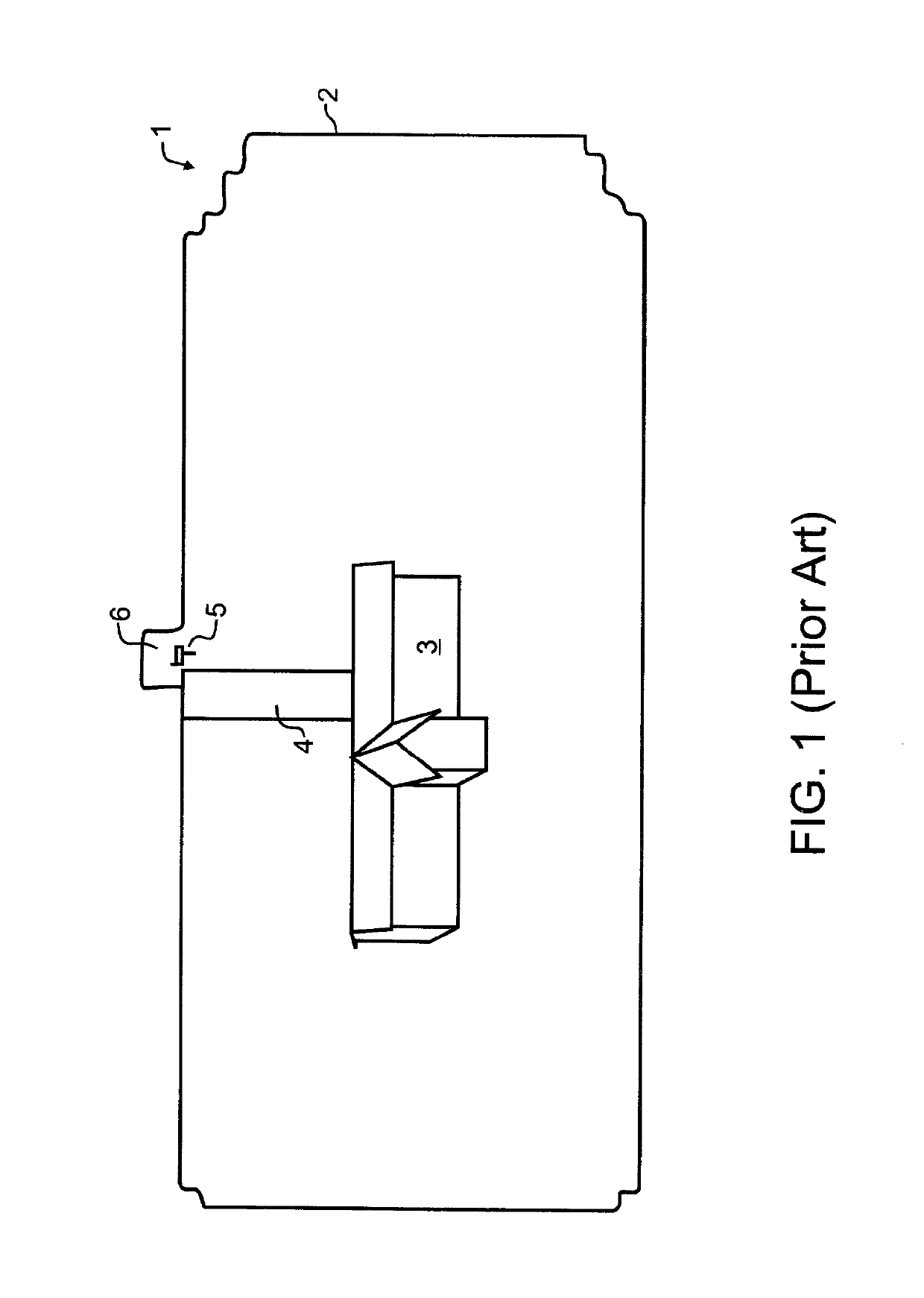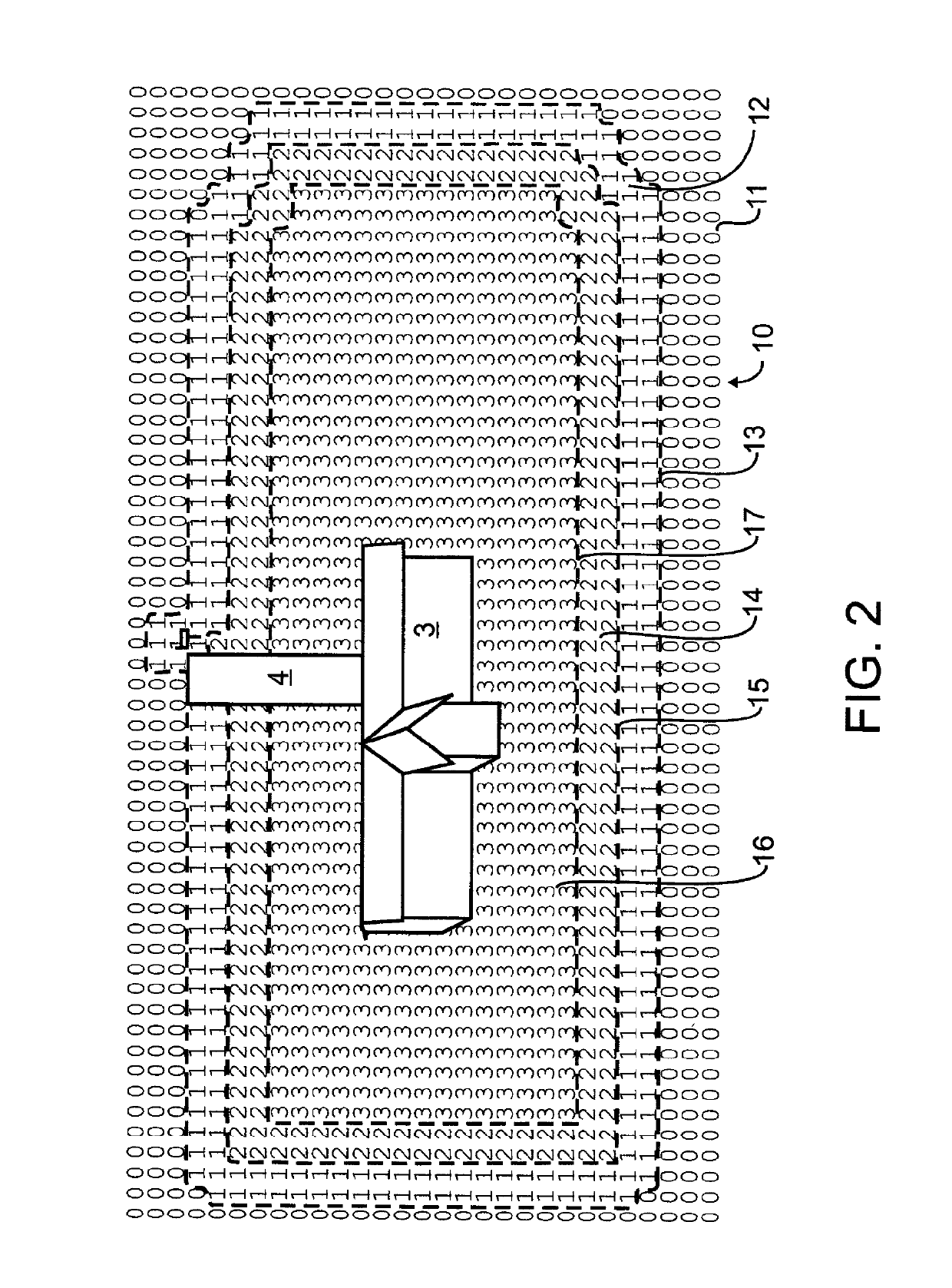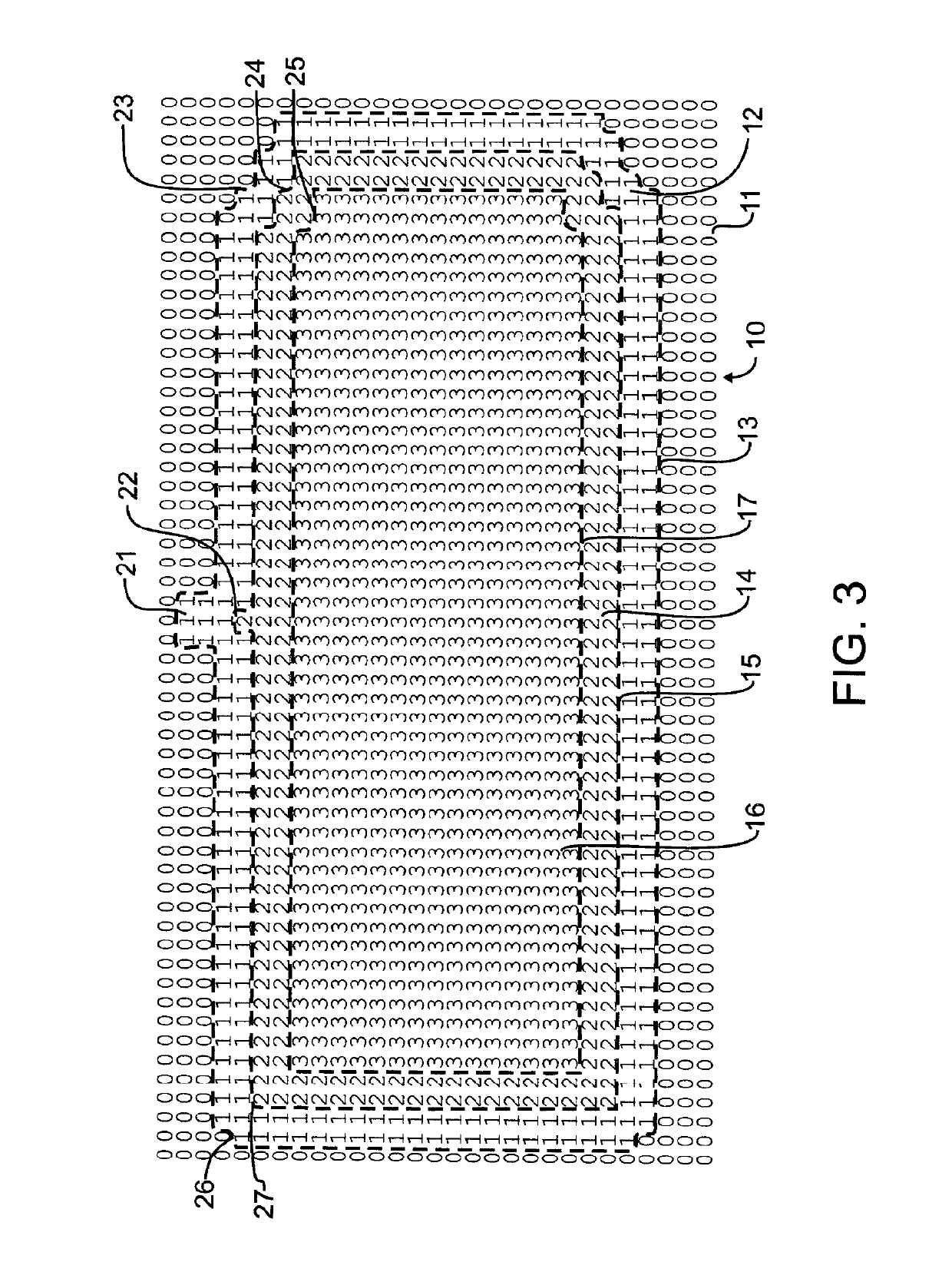Irrespective of the reason, there have been limited ways to communicate to a dog a territory that the dog should stay within, and to elicit this behavior from a dog.
As may be apparent, such structures are typically expensive and
time consuming to install, and necessarily static in location.
In other words, they are only useful at the location where they are constructed, and so are of no value when a pet and owner travel.
Furthermore, these static structures often interfere in other ways with other activities of the dog owner, such as with
lawn care or interfering with the owner's movement about a property.
Unfortunately, most dogs are notoriously bad at untangling or unwrapping a leash from a fixed object.
Consequently, dogs tend to tangle the leash about trees, posts and other objects, and can become completely unable to move.
If the owner is not aware that the dog has become tangled, this can lead to dangerous situations in cases such as
extreme weather or when the dog has been left unattended for an extended period.
Once again, if the owner is unaware, the dog may travel from the desired area into other unsuitable areas such as roadways and the like.
This may put both dog and humans in jeopardy, such as when a vehicle swerves to avoid the dog or when a dog has a temperament not suited to the general human
population.
As can be understood, for all but circularly shaped areas, this leads to a great deal of space that the dog cannot access, but which would otherwise be suitable for the dog.
Unfortunately, burying a line can be difficult or impossible if there are other objects, such as
irrigation systems, buried utility lines,
landscaping, hard surfaces, trees, or other fixed objects.
Additionally, current soil conditions such as frozen soil or
snow-covered ground in the winter may also limit the ability to bury the line.
Furthermore, the effort required to bury the line limits these systems to a single location, meaning the
system cannot readily be moved or transposed from the home to a popular park or the like.
Consequently, a dog may be shocked or otherwise punished without basis or appropriate reason.
This problem is also very location dependent, meaning that there are places where there is so much EMI-RFI that a
radio system is completely unusable.
As a result of the inability to completely eliminate or substantially eradicate the effects of EMI-RFI, the use of these radio systems is far from universal.
When the shock is instead triggered by the absence of a
radio signal, such as when a
beacon is used to contain a pet, obstacles such as buildings may prevent reception, undesirably limiting the range of travel of the animal.
Furthermore, blocking the
signal from the collar, such as when a dog lays down, is being pet by the owner, or is oriented in the
wrong direction, may also lead to
radio signal attenuation and undesirable triggering of the shock.
As is known in the field of psychology, this random punishment that is commonplace in both types of radio systems can literally destroy the training of a dog, and may lead to erratic or wanton misbehavior.
Another problem arises when a dog unintentionally crosses a buried line.
Consequently, the dog will be extremely confused, and will commonly not return, even where the dog would have otherwise.
The dog's speed may be so great that even the stimulation is very short as the dog crosses the buried line, in the heat of the chase.
Furthermore, the dog's attention and focus are thoroughly directed at the pursuit of the animate creature, and even the most powerful stimulus may go unnoticed.
However, once the chase is over, the dog's adrenaline or drive has diminished.
Unfortunately then, the stimulation trying to re-enter will most frequently be of much longer duration, and much more recognized by the now not-distracted dog, than when the dog left the containment area.
Several systems have been proposed in the literature for several decades, but these systems have not as yet become commercially viable.
One significant limitation of prior art GPS systems is the accuracy of the
system.
However, for pet containment this level of accuracy is completely unacceptable.
As will be readily appreciated, this unpredictable locating will lead to punishment of the animal when, in fact, the animal is within the proper location.
In turn, this will lead to a complete failure of training, and erratic and unpredictable behavior of the animal.
Another limitation is the amount of calculation required to determine whether the pet is within a selected area of containment.
Unfortunately, this requires a substantial amount of computation, which increases greatly as the number of nodes are increased.
Undesirably, this also adds complexity, drains precious battery power limiting the
usable collar time, and again makes the containment system dependent upon conventional
radio communications systems.
In addition, the need for both the collar and a secondary
base station makes the system far less portable.
This means, for example, that taking the dog away from home to a park may be impractical.
A further limitation of the prior art is battery life.
A collar that must be removed and recharged every few hours is unacceptable for most purposes.
Unfortunately, the intensive computations required by prior art systems require either a fast and consequently
higher power processor unit, or a communications link such as a radio link to a
base station.
It will be apparent that walkie-talkies,
cell phones and other hand-held radio devices all have very large batteries to provide adequate transmission and reception life, and yet these devices often only support several hours of communications.
As can be appreciated, size and weight are severely restricted for a device fully self-contained on a dog's collar, and the inclusion of a large battery is undesirable.
Yet another limitation of the prior art is the unintentional blocking or loss of
GPS signals.
There are a number of conditions that can lead to loss of
GPS signals.
One is unfavorable weather, which can lead to a severely attenuated
satellite signal, and much higher
Signal to
Noise Ratios (SNR).
However, GPS systems require multiple satellites to obtain a position fix, and even if only one of the satellites is blocked, then the ability to accurately fix position may be lost.
Another situation that can lead to
signal loss is when the collar itself is covered.
If the dog lays in an unfortunate position partially or completely covering the collar, then
satellite signals will be either blocked or too severely attenuated.
In any of these situations where the GPS signal is partially or completely blocked or attenuated, the latitudinal and longitudinal positional accuracy will either be inadequate, or may be completely lost.
In such instances, a prior art collar may become completely non-functional.
Worse, this loss of function can occur without notice in an erratic manner, possibly causing severe harm to the training of the dog.
As is very well known and established, negative reinforcement is less effective than positive reinforcement or a combination of positive and negative reinforcement.
Furthermore, the type of reinforcement can also affect the temperament of the animal.
The combination can literally destroy the psychological well-being of the animal.
 Login to View More
Login to View More  Login to View More
Login to View More 


